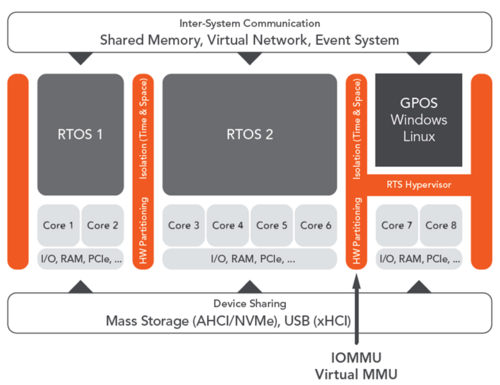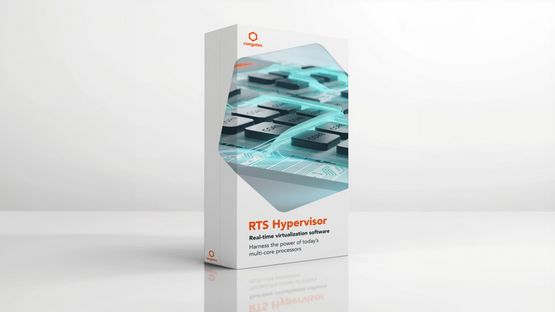Hypervisor technology
Consolidate multiple applications on one hardware platform
QuickNav: Our offerings / Resources / Benefits / Basics
Our offerings
Hypervisor-on-Modules
At congatec, the hypervisor is now standard in all our new x86-based Computer-on-Modules. With the free trial license, you can immediately start evaluating the advantages of virtualization. Check out our whole Hypervisor-on-Module product range.
RTS Hypervisor
Additionally, we offer the industry leading RTS Hypervisor from Real-Time Systems as a stand-alone software for your applications, no matter if you are relying on congatec hardware or not.
Want to learn more about hypervisor technology?
View our assets to learn more about the benefits of hypervisor technology
Hypervisor on Modules - Consolidate multiple applications on one hardware platform
Duration: 02:25 min
Discover how you can leverage our Hypervisor-on-Module for your applications. The Hypervisor-on-Module is an integral part of all our new x86-based Computer-on-Modules. It comes with a free trial license so you can start evaluating right away!

System consolidation in autonomous mobile robots
Software functions define the capabilities of autonomous robots. Consolidating all functions on one system can help to make your designs more powerful, cost effective, and resilient. Learn what is possible and what to consider in our whitepaper.
PRESS RELEASE
congatec simplifies system consolidation by integrating the Hypervisor on its x86 Computer-on-Modules
The benefits at a glance
Save cost
Consolidating the workloads of previously separated systems on one single system reduces hardware requirements, cabling, and complexity.
Improve reliability
Less systems means reduced points of failure leading to greater reliability, improved mean time between failures, and lower maintenance costs.
Stay ahead
Simply add leading-edge functionalities like AI or secure IoT connectivity by installing another virtual machine and leave your hardware platform unchanged.
Increase efficiency
Make full use of the available resources by running multiple operating systems and leave no core in idle mode to optimize performance per watt and battery runtime.
Streamline development
Separate monolithic software into dedicated function blocks to streamline development, certification, and roll-out without affecting the complete application.
Improve time-to-market and agility
Separating your applications into modular workloads helps to reduce overall complexity, enhance agility and gain important time-to-market advantages.
Hypervisor basics
A hypervisor permits multiple operating systems to run concurrently on one multicore x86-based Computer-on-Module . The hypervisor partitions the available resources including CPU cores, graphics, memory, timers, and I/O devices like PCIe, USB, etc.
These resources are assigned as required to individual virtual machines (VMs). Each VM runs its own operating system. The VMs are completely isolated from each other, so one VM cannot compromise another.

Typical use cases of hypervisor technology
- Consolidating the workloads of previously separated systems on one single system to save hardware, cost, and energy.
- Separating monolithic software applications into function blocks and running them exclusively in their own OS but still on one system, and
- Protecting valuable IP by running critical code on one secured VM and using others for open world communication and end-customer applications.






